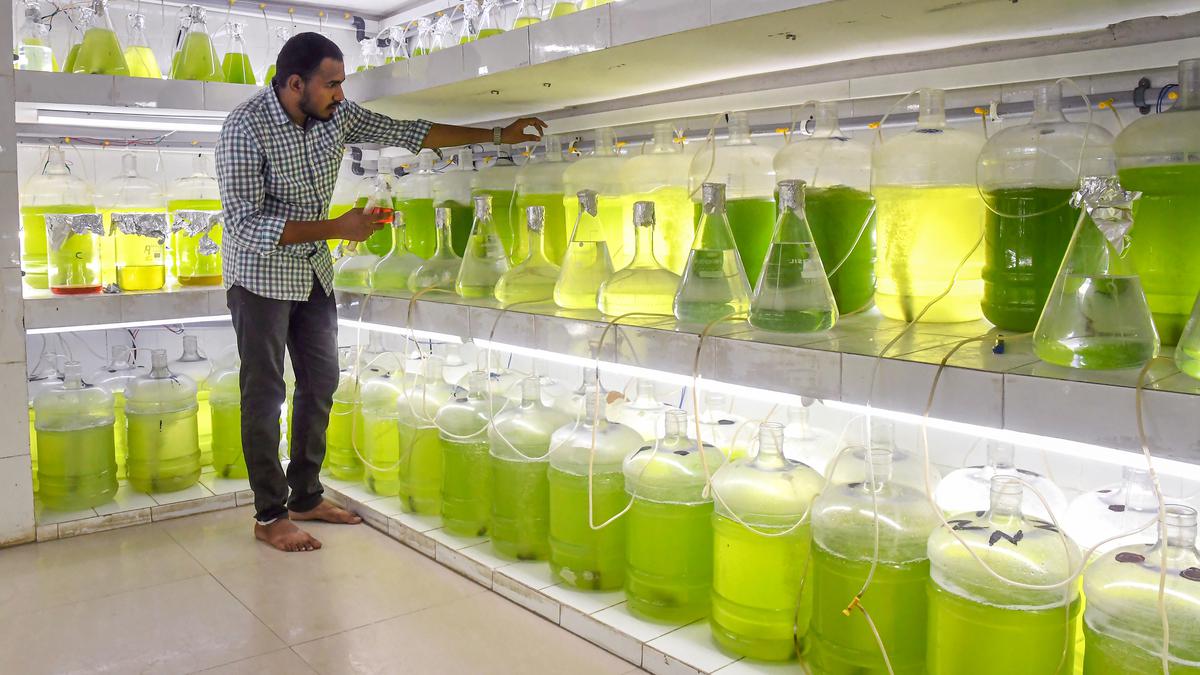
CMFRI takes up captive breeding, seed production of Indian Pompano, two other species at its mariculture lab in Visakhapatnam
The Hindu
The Centre for Marine Fisheries Research Institute, Visakhapatnam centre, is currently breeding ‘Groupers’ (locally known as ‘bonthalu’ in Telugu), John’s Snapper (appalu chepa) and Indian Pompano (chanduvapara) in its mariculture lab.
The Centre for Marine Fisheries Research Institute (CMFRI), Visakhapatnam centre, is currently breeding ‘Groupers’ (locally known as ‘bonthalu’ in Telugu), John’s Snapper (appalu chepa) and Indian Pompano (chanduvapara) in its mariculture lab. These fishes are available in deep waters but are not well distributed in the shallow waters.
The CMFRI has developed technologies and established protocols for development of brood stock, captive breeding and seed production techniques of selected marine fish. The objective is to provide sustained income to coastal fish farmers, whose livelihood is being hit by frequent cyclones.
The grow out/adult stage species, grown in the mariculture lab, is given to the fish farmers, who can grow the fish in their ponds. The broodstock is cultured in tanks of varying sizes under the Recirculatory Aquaculture System (RAS) at the mariculture lab. The RAS allows usage of the same water for four to six months for breeding. This considerably reduces the cost and time for drawing the water from the sea frequently.
“The Indian Pompano commands the maximum demand. A fully grown adult of this species can weigh between 2.5 kg and 5 kg. Groupers can grow up to 9 kg and John’s Snapper weighs up to 8 kg. Water is drawn into the tanks from the nearby coast. The broodstock is disinfected, before introduction into the tank, and is fed twice a day. Once the spawn is released in the tank, the floating eggs are collected in the egg collection chamber. They are disinfected and again stocked in smaller fibre reinforced tanks,” Ravi Kumar Avadhanula, a senior technical staff member, told The Hindu.
“The mature fish (broodstock) may breed naturally or breeding can be induced by injecting hormones. The small larvae feed on phyto plankton, zoo planktons like rotifer, copepods and artemia. The amount of feed given is based on the development stage of the larvae,” he says.
The stages in development of fish are: eggs – larvae – fingerlings – juvenile – grow out – adult. The grow out to adult stage takes about six months. At the grow out stage, they can be put in cages for further growth.
“The CMFRI has set up floating cages in the coastal waters off Visakhapatnam and Nagayalanka. The beneficiary fish farmers are given the fish species at the grow out stage, so that the farmers can develop them further in ponds near their home, and get sustained income,” says CMFRI Visakhapatnam Regional Centre Head J. Charles Jeeva.













